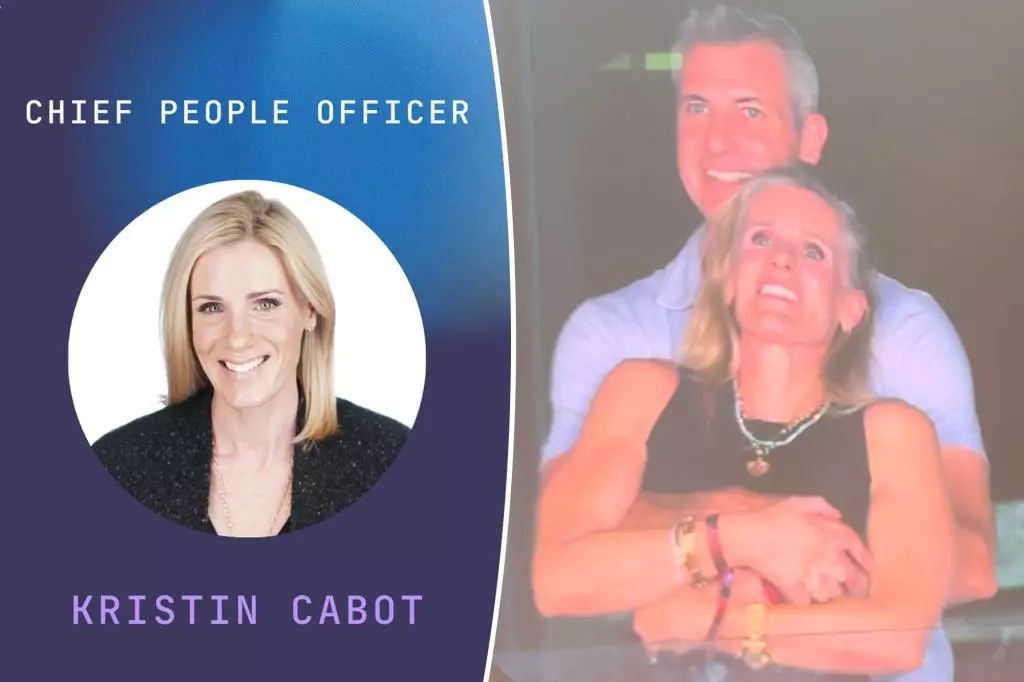In the world of corporate elites, self-promotion often serves as an armor that cloaks true character and conduct. Kristin Cabot’s LinkedIn biography epitomizes this phenomenon, portraying herself as a fearless, influential leader capable of winning trust across all levels of an organization. Her boasts about fostering award-winning cultures and implementing innovative systems suggest a desire for recognition and admiration. Yet, these lofty claims frequently mask a disconnect between perception and reality—a disconnect that becomes even more glaring when personal misconduct enters the spotlight.
Their professional images are carefully curated, emphasizing prowess in engagement and talent management. However, these claims can sometimes be illusions designed to impress stakeholders rather than reflections of authentic leadership. When such leaders are caught in compromising situations—like Cabot and her boss, Astronomer CEO Andy Byron—those fake facades crumble swiftly, revealing vulnerabilities rooted in personal flaws rather than professional integrity. The gap between how these figures project themselves and how they behave in moments of privacy underscores the often superficial nature of corporate self-image.
The Discrepancy Between Persona and Reality
The viral incident at the Coldplay concert exposes the stark contrast between the polished corporate image and the personal failings of those in power. Cabot and Byron’s hurried attempt to hide their PDA suggests embarrassment and a realization that their professional personas are susceptible to scrutiny. The social media chatter and viral footage illustrate that despite the polished images, human flaws such as infidelity or lack of discretion remain pervasive.
Furthermore, this incident poses questions about the integrity of leadership—how much of the trust they claim to earn is genuine, and to what extent is it fabricated for career advancement? Do they see themselves as infallible icons deserving admiration, or are they aware of their vulnerabilities and hide them under layers of PR? The public exposure of their indiscretion challenges the narrative that empowerment and leadership are rooted solely in virtue, exposing instead the human imperfections often lurking beneath the surface.
The Hidden Dark Side of Leadership Culture
Beyond the personal scandal, a deeper critique lies in the leadership culture that seems conducive to such behavior. The resurfaced reports about Byron’s aggressive management style at Cybereason suggest an environment where fear and intimidation may be normalized. Disregarding challenges or dissent could be a common practice in his leadership—a trait that correlates negatively with true efficacy and sustainable success.
It’s ironic that someone who claims to champion diversity and collaborative work environments might simultaneously cultivate an atmosphere of repression and control. Leadership based on fear and image management often leads to toxic workplaces, where authenticity is sacrificed for appearances. This discrepancy raises uncomfortable questions: Are these leaders genuinely committed to fostering healthy cultures, or are they more interested in maintaining a polished facade? How many organizations tolerate or even incentivize such conduct because of the allure of power?
The Question of Authenticity in Power Dynamics
The incident at the concert and Byron’s reputation highlight how quickly the veneer of professionalism can be stripped away in moments of vulnerability. It also underscores the danger of equating confidence or outward success with moral virtue. Power dynamics often empower some to act unethically, rationalizing their behavior under the guise of leadership. Yet, these episodes remind us that true leadership requires consistency, humility, and integrity—qualities that are often absent in those who prioritize reputation over substance.
The saga urges a broader reflection on organizational values and the societal obsession with charismatic figures. Many leaders leverage their influence to craft images that serve their interests, sometimes at the expense of ethical standards. When scandals erupt, the duplicity of their personas becomes apparent, forcing organizations and followers alike to confront uncomfortable truths: leadership is not merely about projecting strength but embodies accountability and authenticity.
—
This critique unearths a fundamental truth: leadership built on performative trust and superficial charisma is inherently fragile. The personal flaws that surface when power is tested reveal the often-overlooked human vulnerabilities lurking behind carefully curated images. As society increasingly demands transparency and accountability, genuine leaders will be those unafraid to confront their imperfections rather than hide behind polished facades.

